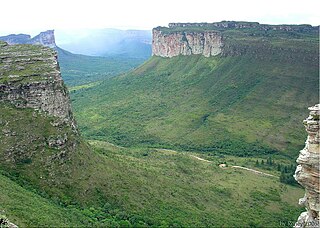
The Chapada Diamantina National Park is a national park in the Chapada Diamantina region of the State of Bahia, Brazil. The terrain is rugged, and mainly covered by flora of the Caatinga biome.

Lençóis is a municipality in the state of Bahia in Brazil. The population is 11,499 in an area of 1277 km². The town has a well-preserved colonial atmosphere and is the starting point for treks into Chapada Diamantina. The city is served by Horácio de Mattos Airport.

The Brazilian Highlands or Brazilian Plateau are an extensive geographical region, covering most of the eastern, southern and central portions of Brazil, in all approximately half of the country's land area, or some 4,500,000 km2. In addition, the vast majority of Brazil's population lives in the highlands or on the narrow coastal region immediately adjacent to it.

Alto Paraíso de Goiás, usually referred to as Alto Paraíso, is a municipality located in the northeastern region of the state of Goiás, Brazil. The city is located in the Chapada dos Veadeiros and, since 2001, in the environmental protection area (APA) of Pouso Alto. Alto Paraíso is about 220 km from Brasilia/DF and 412 km from Goiânia/GO. Alto Paraíso is located in the central Brazilian Highlands, a region characterized by the cerrado biome, also known as the Brazilian savannah. The region offers many natural and cultural attractions related to the ecotourism.

Chapada dos Veadeiros National Park is a national park of Brazil located in the state of Goiás, on the top of an ancient plateau with an estimated age of 1.8 billion years. The park was created on January 11, 1961 by President Juscelino Kubitschek, and listed as a World Heritage Site by Unesco in 2001. It occupies an area of 2,405 square kilometres (929 sq mi) in the municipalities of Alto Paraíso de Goiás, Cavalcante and Colinas do Sul. The park is maintained by Chico Mendes Institute for Biodiversity Conservation.

Morro do Chapéu is a municipality in the Brazilian state of Bahia, 386 km northwest of its capital, Salvador, 1012 meters above the sea level, because of which it is one of the coolest towns in Bahia, with temperatures occasionally falling below 10 °C in the winter. Its estimated population in 2020 is 35,440.

Tourism in Brazil is a growing sector and key to the economy of several regions of Brazil. The country had 6.589 million visitors in 2018, ranking in terms of the international tourist arrivals as the second main destination in South America after Argentina and third in Latin America after Mexico and Argentina. Revenues from international tourists reached US$5.8 billion in 2015, continuing a recovery trend from the 2008–2009 economic crisis.
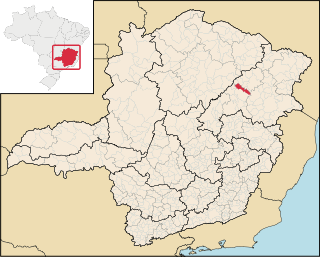
Chapada do Norte is a municipality in the northeast of the Brazilian state of Minas Gerais. As of 2020 the population was 15,345 in a total area of 828 km². The elevation of the town center is 751 meters. It is part of the IBGE statistical meso-region of Jequitinhonha and the micro-region of Capelinha. It became a municipality in 1963.

Senador Modestino Gonçalves is a Brazilian municipality in the state of Minas Gerais.
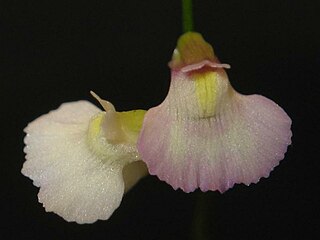
Utricularia rostrata is a small annual carnivorous plant that belongs to the genus Utricularia. U. rostrata is endemic to the Chapada Diamantina highlands of Bahia, Brazil. It grows as a terrestrial plant in damp sandy soils near streams and waterfalls in semi-shaded areas at altitudes from 550 to 1,570 metres. It was originally described and published by Andreas Fleischmann and Fernando Rivadavia in 2009, though specimens of this species had been discovered as early as 1992. Fleischmann and Rivadavia note that the species is common throughout the Chapada Diamantina highlands and its distribution includes Chapada Diamantina National Park, thus justifying its ranking as a species of Least Concern under the IUCN.

Teodoro Fernandes Sampaio was an Afro-Brazilian polymath and public intellectual who worked as an engineer, geographer, politician, and historian.
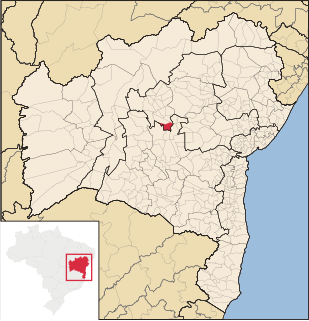
Iraquara is a municipality in the state of Bahia in the North-East region of Brazil.
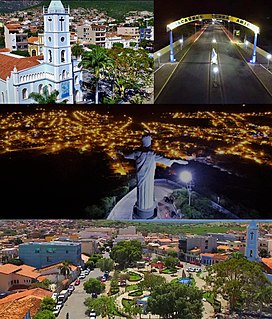
Macaúbas is a municipality in the state of Bahia in the North-East region of Brazil. Its population in 2020 was 50,161 inhabitants. The municipality covers an area of 3039 km². It lies in the call Physiographic Zone of the Serra Geral, the Chapada Diamantina Southern microregion.
Mucugê is a municipality in the state of Bahia, in the North-East region of Brazil. It is close to the Chapada da Diamantina National Park.
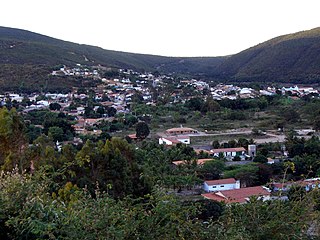
Palmeiras is a municipality in the state of Bahia in the North-East region of Brazil.
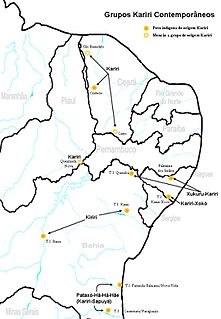
Kiriri people are indigenous people of Eastern Brazil. Their name is also spelled Cariri or Kariri and is a Tupi word meaning "silent" or "tactiturn."

Chapada Diamantina is a region of Bahia state, in the Northeast of Brazil. This mountain range is known as “Serra do Espinhaço,” in Minas Gerais state, south of Bahia.

Caverna Torrinha (BA-037) is a cave located in the village of Torrinha, 15 km from the town of Iraquara and 1 km of the highway BA-122, inside the area of the Chapada Diamantina National Park, in the State of Bahia, Brazil. It is considered the most beautiful cave within the area of the state, having the second largest flower of aragonite in the world.

Pterinopelma sazimai is a species of tarantula and is known as the Brazilian blue, Iridescent Blue or Sazima's Tarantula. It was first described by Rogério Bertani, Roberto Hiroaki Nagahama and Caroline Sayuri Fukushima in 2011. In 2012, it became the first Brazilian species to appear on the International Institute for Species Exploration's Top 10 New Species list. Its name honors Ivan Sazima, a Brazilian zoologist who was the first to collect exemplars of the species. It is now considered an endangered species owing to smuggling and a shrinking habitat.

















